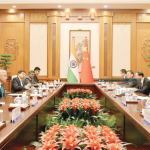As the winter season approaches, people of the valley brace themselves for the inevitable challenges that lie ahead. The perennial issue of road connectivity during the harsh winter months is one that demands immediate and effective action. The valley of Kashmir known for its stunning landscapes and severe winters, unfortunately, also has a reputation for treacherous and inaccessible roads during the colder months. This becomes a significant concern for the general public who often find themselves cut off from the rest of the country, causing a wide range of difficulties, from access to essential commodities to healthcare services. A comprehensive, year-round connectivity plan is the need of the hour. Many experts are of the opinion that there is a dire need to move beyond short-term, patchwork solutions and work towards sustainable, effective measures. This involves not just the construction and maintenance of roads but also incorporating technological advancements and sustainable practices. Modern tunnelling techniques and winter-resistant road materials could play a crucial role in creating durable and resilient roadways. The Atal Tunnel, opened in 2020 in Himachal Pradesh, is a prime example of how state-of-the-art engineering can make year-round connectivity a reality in challenging terrains. Similarly, initiatives such as the Z-Morh and Zojila tunnels are steps in the right direction, but their progress needs to be expedited. Furthermore, better maintenance practices such as efficient snow clearance systems, installation of road heating technologies, and regular checks for road stability can significantly improve road conditions during winters. Collaboration with countries like Norway and Canada, which successfully manage their road networks in extreme winter conditions, could provide valuable insights. The importance of road connectivity extends beyond simple mobility. It is a lifeline for the people, enabling access to education, healthcare, and economic opportunities. It aids in the rapid response and recovery during emergencies and natural disasters. It fosters social inclusion and builds community resilience. The government’s recent focus on infrastructure development in Jammu and Kashmir is indeed commendable. However, the implementation of these plans needs to be timely and efficient. A robust monitoring and accountability mechanism should be put in place to ensure that these projects are delivered on time and meet the set standards. Investing in better roads is investing in the future of Jammu and Kashmir. The benefits of this move will far outweigh the costs, enhancing the quality of life and boosting the UT’s economy, and strengthening the nation’s unity. Government and the concerned authorities should emphasize the necessity of enhancing and maintaining efficient road infrastructure during winter months to ensure safety, accessibility, and a life unhindered by the seasonality of roads.








